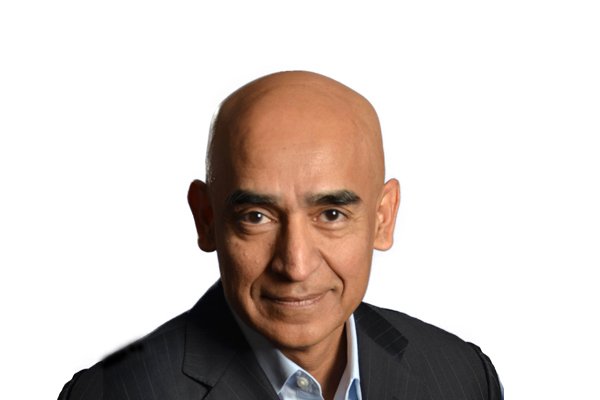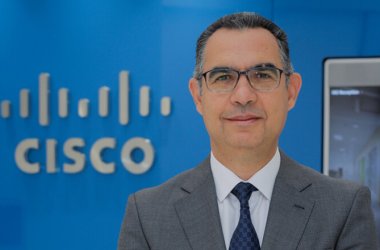As a member of the company CEO office, HP’s Vice President of Worldwide Public Sector Programmes Suparno Banerjee is in the business of dealing with high-powered people. Recently in Dubai, he took time out to speak with CNME about his philosophy on transforming government through technology.
What can you tell me about HP’s public sector solutions portfolio?
As you can imagine, our offerings are very broad, including products, services, software, including HP Financial Services, which many people tend to overlook. For the public sector we offer an entire breadth of services. It’s very important and means big business; we deliver amazing outcomes for government customers. We secured two of the most widely used and critically important intranets on planet, one for the Navy and Marine Corps in the US, and the other being Tri-service UK, meaning pretty much every welfare check mailed in the UK is processed by HP.
It’s very broad, with a big services portfolio where we implement services on behalf of government enterprise groups and PPS solutions in terms of devices, hardware and software. On the software side we have a broad range of analytics offerings and applications. Our entire portfolio is used in one way or another by governments. We’re aiming to drive transformation and data centre modernisation.
How do you perceive the technology shortcomings in the Middle East public sector and how can your solutions plug those gaps?
I wouldn’t label them shortcomings as such. I think each government or region, and national or local government, has its own unique set of challenges and opportunities. Challenges come from demographics, economic growth and the financial shocks over the last few years; they’re all trying to face the demands of the citizen, economic growth potential and other such things. It’s not a question of the negatives, but of how they address critical issues and how to best address the opportunities in front of them, whether it’s building an energy efficient data centre, coping with an increase in online services, or transitioning to e-government or digital government. They’ll need more storage, more data centres, more delivery of services, more analytics, more mobility. If you can build a next generation data centre platform that consumes 70 percent less energy then that’s a massive saving. On top of that layer, everything else that goes on in terms of the next-generation application, the better connection with the citizen, a better understanding where you can use use case budgets to drive it – you now have something important to drive economic growth, and better connectivity.
That’s how we look at smart and future cities, they’re always a quest for something better. Ten years from now we will be looking at the next generation of future cities, and things won’t stop there. These cities will outlive us, and the next n number of generations. We look at six fundamental dimensions to help governments to create livable cities, which are encompassed by being safe, having clean water, energy, and clean spaces. Connected cities need to move people, goods and information both inside the city and across the region and the globe. We need cities to create the next generation of jobs and industries because it all comes down to growth. These cities and governments are in competition to draw in the best talent. We see ourselves helping cities create the next generation of infrastructure and government services, whether it’s the Sheikh’s vision of totally connected e-gov services here, or for smart cities. There are two other important dimensions – the first is how a city becomes agile and resilient. Agility means being able to respond to environmental changes, healthcare demands, terrorism, economic and natural disasters. Being resilient means adjusting and withstanding day-to-day shocks. Every time I speak to CIOs and city officials they talk about this.
Lastly, it’s a question of how a city creates a framework of policy governance for innovation, how to create a sustainable ecosystem. Cities will spend upwards of $3 trillion in the coming years on infrastructure.
We believe that we have a nuanced and integrated model. We’ve been with governments for many years and have overseen deep transformations. Conversations with governments for large complex projects are a journey, we don’t simply give a solution and walk away.
What is HP’s philosophy and strategy on coping with the vast quantities of data currently being created?
We’re already doing a lot of things around it. Let’s take where the data is being created – structured data from systems and transactions, then unstructured, from things like corporate email, sensors, broadcast media, streams and social media.
Our Autonomy platform at the front end addresses the entire suite, with both structured unstructured data that does everything and gives a bunch of capabilities.
On other side, you also need to store the data; deduplication, and store only once.
You need computer power for the analytics side, these are software-defined platforms, where the machine is suited to the workload aspect of analytics. We look at the ingestion side, from managing data to securing it, and driving insight and services through it.
It’s important to close the loop through our services business to operationalise insights, whether it’s the visualisation of data or taking that and putting into an application system. When I step back and look at it from solution a point of view, it’s where the customer wants to act on it, either at the front end or from an end-to-end perspective. In many cases, compelling value propositions come when you can drive an end-to-end story, that’s when customers get real outcomes.
Security is such an important aspect of handling government data. What’s your strategy in terms of processes and holistically in this respect?
There are two important issues in this respect – security and privacy. Data needs to be secure but information needs to remain private. It needs to be kept from being broken into and stolen; governments deal with personal, sensitive information which should only be seen by certain people.
We have the tools to secure the network itself or data while at store or at rest, or even in the application layer. Whether it’s our use of tools that we use from Fortify which do analyses on meeting security needs, or through our security practice in enterprise services.
On the other hand, we’re certifying our products to ensure they meet certification requirements that many governments are putting in place, such as FIPS 140-2 so that they meet third party requirements.
Security is a pervasive issue which needs to be taken very seriously, and is at the core of what we do.





